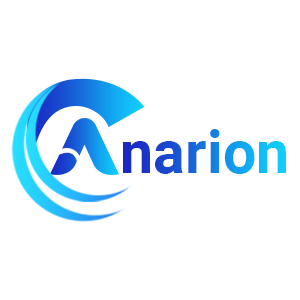GLPI VM by Anarion Technologies
GLPI (Gestionnaire Libre de Parc Informatique) is a powerful and flexible open-source IT asset management and service management software suite that provides organizations with a complete solution for managing their IT infrastructure and services. Initially designed to manage hardware and software assets, GLPI has evolved into a robust platform that supports a wide range of IT management functions, making it an invaluable tool for IT departments in businesses of all sizes.
One of the core features of GLPI is its ability to track and manage IT assets, including computers, servers, network devices, printers, and software licenses. It allows businesses to create a detailed inventory of their assets, track their usage, and monitor their lifecycle. From procurement to decommissioning, GLPI helps ensure that assets are utilized effectively and are compliant with organizational and regulatory requirements. This inventory functionality is complemented by powerful reporting tools that provide insights into asset usage, maintenance, and depreciation.
In addition to asset management, GLPI offers comprehensive service management capabilities, which include a fully-featured helpdesk and ticketing system. IT teams can efficiently handle incidents, requests, and service disruptions through a centralized interface. The service desk module allows users to submit tickets for IT issues, track the status of their requests, and communicate with IT staff, all while maintaining detailed records for future reference. The incident and problem management features ensure that recurring issues are addressed promptly, and preventative measures can be implemented to reduce downtime and improve service quality.
GLPI’s change management features support IT organizations in managing and controlling changes to their infrastructure in a structured manner. Whether deploying software updates, replacing hardware, or modifying configurations, GLPI ensures that changes are planned, tested, and executed with minimal risk to business operations. The tool also includes functionalities for managing service level agreements (SLAs), which help ensure that IT services are delivered in accordance with defined expectations.
Security is a key focus within GLPI, with features that allow organizations to monitor and mitigate security risks. This includes tracking and managing vulnerabilities, monitoring user access and permissions, and generating compliance reports. The platform also integrates with other security tools and services to provide a more comprehensive view of an organization’s IT security posture.
To subscribe to this product from Azure Marketplace and initiate an instance using the Azure compute service, follow these steps:
1. Navigate to Azure Marketplace and subscribe to the desired product.
2. Search for “virtual machines” and select “Virtual machines” under Services.
3. Click on “Add” in the Virtual machines page, which will lead you to the Create a virtual machine page.
4. In the Basics tab:
- Ensure the correct subscription is chosen under Project details.
- Opt for creating a new resource group by selecting “Create new resource group” and name it as “myResourceGroup.”
5. Under Instance details:
- Enter “myVM” as the Virtual machine name.
- Choose “East US” as the Region.
- Select “Ubuntu 18.04 LTS” as the Image.
- Leave other settings as default.
6. For Administrator account:
- Pick “SSH public key.”
- Provide your user name and paste your public key, ensuring no leading or trailing white spaces.
7. Under Inbound port rules > Public inbound ports:
- Choose “Allow selected ports.”
- Select “SSH (22)” and “HTTP (80)” from the drop-down.
8. Keep the remaining settings at their defaults and click on “Review + create” at the bottom of the page.
9. The “Create a virtual machine” page will display the details of the VM you’re about to create. Once ready, click on “Create.”
10. The deployment process will take a few minutes. Once it’s finished, proceed to the next section.
To connect to the virtual machine:
1. Access the overview page of your VM and click on “Connect.”
2. On the “Connect to virtual machine” page:
- Keep the default options for connecting via IP address over port 22.
- A connection command for logging in will be displayed. Click the button to copy the command. Here’s an example of what the SSH connection command looks like:
“`
ssh azureuser@10.111.12.123
“`
3. Using the same bash shell that you used to generate your SSH key pair, you can either reopen the Cloud Shell by selecting >_ again
or going to https://shell.azure.com/bash.
4. Paste the SSH connection command into the shell to initiate an SSH session.
Usage/Deployment Instructions
Anarion Technologies – GLPI
Note: Search product on Azure marketplace and click on “Get it now”
Click on Continue
Click on Create
Creating a Virtual Machine, enter or select appropriate values for zone, machine type, resource group and so on as per your choice.
After Process of Create Virtual Machine. You have got an Option Go to Resource Group
Click Go to Resource Group
Copy the Public IP Address
Open your browser and go to the server’s URL. In my case it’s http://IP_Address/glpi
The first step will let you choose the installation language. Select your language, and click validate.
Usage of GLPI is subject to GNU license approval. Once licensing terms read and accepted, just validate the form.
If you do not agree with licensing terms, it is not possible to continue installation process.
This screen allows to choose between a fresh GLPI installation or an update.
Click on install.
This step will check if prerequisites are met. If they’re not, it is not possible to continue and an explicit error message will tell you about what is wrong and what to do before trying again.
Some prerequisites are optionals, it will be possible to continue installation event if they’re not met.
Database connection parameters are asked.
Server: localhost
DB User: glip_user
Password: Admin@123
Once connection to the database server is OK, you have to create or choose the database you want for your GLPI and init it.
This step initializes the database with default values.
If there is any error; pay attention to the displayed informations.
GLPI will ask you to share some Telemetry informations and to register. This is not mandatory.
This step presents a summary of the installation and give created users list. Please pay attention to those informations and validate to go to the app.
Thanks!!!
All your queries are important to us. Please feel free to connect.
24X7 support provided for all the customers.
We are happy to help you.
Contact Number: +1 (415) 800-4585
Support E-mail: support@anariontech.com




